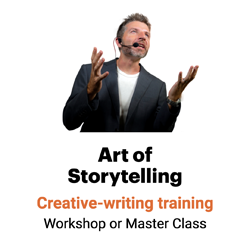6 reasons analogy is more persuasive than literal language
Metaphor is more persuasive than literal language: It’s been proven in the lab.

Make that 41 labs over more than 50 years.
Or so say Pradeep Sopory and James Price Dillard. The two researchers reviewed 41 data-based studies on the persuasiveness of metaphor published between 1952 and 2006. Then they analyzed the studies to determine what made metaphors more or less persuasive.
Bottom line: Metaphors are more persuasive than literal messages, Sopory and Dillard found.
But why?
Six theories of metaphor’s persuasive power
For more than 30 years, scientists have been trying to figure out what makes metaphor more persuasive. Sopory and Dillard outline six perspectives on metaphor and persuasion in roughly chronological order:
1. Pleasure or relief
Metaphors compare two things that seem at first to be totally dissimilar. In The Emperor of All Maladies, for instance, Siddhartha Mukherjee writes:
As cancer cells divide, they accumulate mutations due to accidents in the copying of DNA, but these mutations have no impact on the biology of cancer. They stick to the genome and are passively carried along as the cell divides, identifiable but inconsequential. These are “bystander” mutations or “passenger” mutations. (“They hop along for the ride,” as Vogelstein put it.)
Other mutations are not passive players. Unlike the passenger mutations, these altered genes directly goad the growth and the biological behavior of cancer cells. These are “driver” mutations, mutations that play a crucial role in the biology of a cancer cell.
That makes metaphors a linguistic puzzle. When readers encounter the metaphor “Some cancer cell mutations are passengers; others are drivers,” they go through three stages:
- Perception of error. Readers realize the literal meaning doesn’t make sense.
- Conflict or tension. Readers seek the metaphorical meaning.
- Resolution. Readers find the metaphorical meaning.
Depending on which linguist you’re talking to, that resolution causes readers either pleasure or relief. And that pleasure or relief reinforces not only the metaphorical meaning, but also the position your metaphor illustrates.
2. Communicator credibility
Communicators who use metaphor, this theory goes, are more credible than those who use literal language.
Why?
- Metaphor makes you look smart. “The greatest thing by far is to be a master of metaphor,” Aristotle wrote in the Poetics. “It is the one thing that cannot be learnt from others; and it is also a sign of genius.”
- Metaphor makes them feel good. Metaphor points out previously unknown similarities between things. That’s a source of interest or pleasure to the reader. Impressed by the source of this newfound information, the reader sees the communicator as more credible.
3. Reduced counterarguments
In this view, figuring out the metaphor takes up so many cognitive resources, the reader doesn’t have enough brainpower left to figure out a counterargument.
4. Resource matching
A more sophisticated view of the cognitive resources theory, this theory states that all the thinking we do to figure out a metaphor makes us understand the argument better and remember it longer.
BUT — and as PeeWee Herman says, there’s always a big but — that only works if our cognitive resources match the metaphor.
Can’t understand the message? Less likely to be persuaded.
Understand the message all too well, because the metaphor is a cliché, maybe? Less likely to be persuaded again.
Think of resource matching as the Goldilocks of these theories: For it to work, it must be just right.
5. Stimulated elaboration
The math of metaphor works like this:
A (target) is B (base).
Thee (target) is a summer day (base).
Figuring out metaphors stimulates more thinking about the relationship between the target and base. And that evokes a richer set of ideas than literal language. When those ideas are in agreement with the argument, readers are more persuaded.
6. Superior organization
This view claims that metaphor helps us structure and organize our arguments better than literal language. Plus, the metaphor helps readers link and process our arguments.
The result: Our arguments are more coherent, so people understand them better, and that leads to increased persuasion.
And the winner is …
Superior organization, the researchers say. Metaphor helps us highlight and organize our thoughts. And that makes it easier for people to understand and agree with our positions.
But whatever the reason, the bottom line remains the same: Metaphor is more persuasive.
Why not make a metaphor today?
___
Source: Pradeep Sopory and James Price Dillard, “The Persuasive Effects of Metaphor: A Meta‐Analysis,” Human Communication Research, January 2006

Leave a Reply